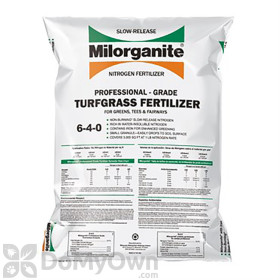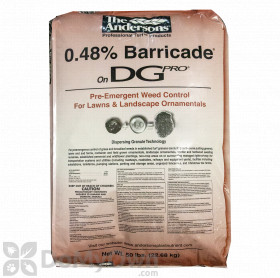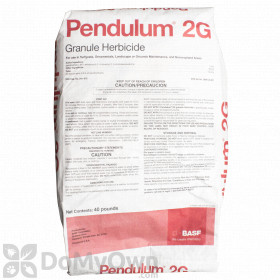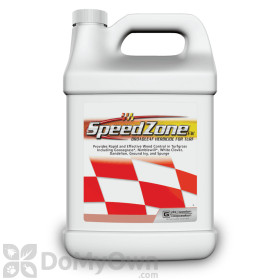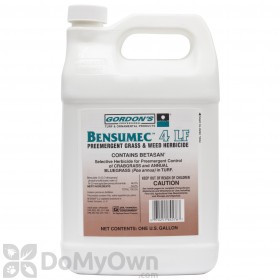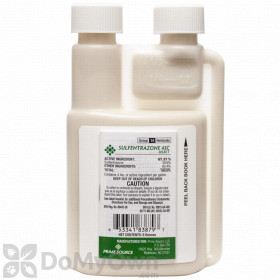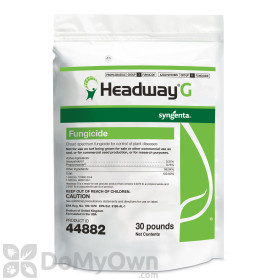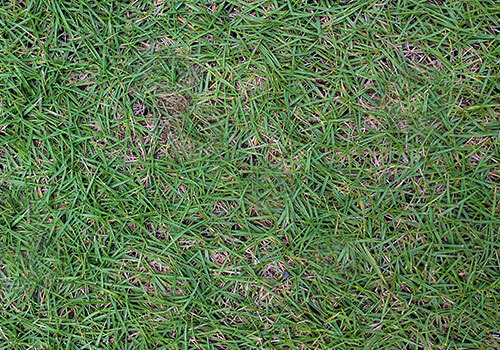
Creeping Bentgrass is a spreading (or creeping) cool-season perennial turfgrass with a bright green color that rewards the lawn's owner with an attractive ground cover if its watering, mowing, and fertilization needs are met.
If you have or are considering bentgrass for use in your home lawn or recreational area, read this guide to learn more about how to care for this popular turf, including:
- When to mow, aerate, and de-thatch
- How to control weeds and lawn diseases
- What pests to look out for
What is Creeping Bentgrass?
Bentgrass is an aggressively spreading cool-season turf that has high requirements for best growth. There are several varieties of bentgrass that can be used in similar ways, but Creeping Bentgrass (Agrostis stolonifera) is the most common and the topic of this guide. With care, Creeping bentgrass - also called carpet bentgrass, seaside bentgrass, redtop bent, and spreading bent - can grow into an appealing, green lawn for home or recreational use.
Features of Creeping Bentgrass:
- Perennial, cool season turf
- Blades are fine, narrow, and flat
- Turf is an attractive green color with an occasional shade of blue
- Is often used on golf courses and other athletic and recreational areas for its resistance to foot traffic and wear
- Spreads along the ground by use of horizontal stems called stolons, forming a dense mat
- Can grow in clumps that may complicate uniform turf maintenance
- Tolerates moderate shade, but not high heat
- Will grow in acidic soils
- Is best suited to growing in cool, humid locations in temperate regions
Bentgrass can handle moderate shade, but not high heat. It tolerates foot traffic and and survives cold winters. It can go dormant in cold weather, but can remain green in milder climate regions.
How to Care for Creeping Bentgrass
Mowing Bentgrass Lawns

Creeping bentgrass grows most rapidly in the cooler months of fall and spring. A bentgrass turf may go dormant in especially cold winter months, during which time it would not need to be mowed. However, it will often remain vibrant and retain its green color during this time in areas with a milder climate.
During its active growth seasons in the fall and spring (usually late September through early May), a weekly mowing schedule may be a good fit for your residential bentgrass lawn. Consider the desired look and use of your turf and adjust the mowing frequency to maintain the recommended height using the suggestions below.
Bentgrass is best suited to being kept short for the most attractive look. Set your mower to 1/2" for a well-manicured looking lawn, and as low as 1/8" for performance spaces. Creeping bentgrass used for residential lawns can be allowed to grow to an inch in height, when the bentgrass blades will begin to take on a fuller, "puffy" appearance. Adjusting to a taller mowing height will help a bentgrass lawn resist drought and heat in warmer seasons. Reducing the frequency that you mow a bentgrass lawn can also help it to endure hot weather.
For bentgrass golf greens, heights as short as 3/16" are popular. This height can be raised to 1/2" in hotter weather to help the turf stand up to heat stress and traffic.
Seeding and Sodding a Bentgrass Lawn
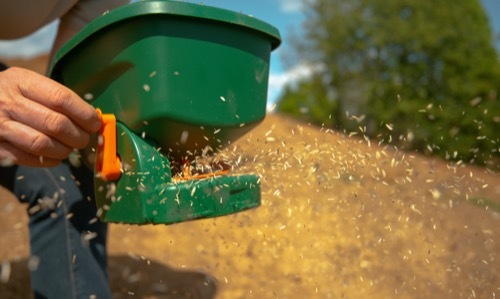
Bentgrass can be placed by use of seeds, plugs, or as sod. Plugs of bentgrass can be bought and often give the best performance for new plantings in southern states.
Planting bentgrass with seeds is the recommended method in northern states. Seeding can typically be done at a rate of 1-2 pounds of seed per 1000 square feet of land, but check your specific product label for use and coverage rates and follow the manufacturer's instructions for the seed you plan to apply. A thin layer of soil not thicker than 1/4" and consistent water should be added after seeding. Germination from seeds will typically occur within 7 to 14 days.
When planting bentgrass from seed, starting in the early fall (around September) is the best plan, allowing the seeds sufficient time to germinate before the soil temperature drops too low with the first frost. By getting your seed in the ground before the frost, the new turfgrass will have more time to establish its roots through the winter and spring before the heat of summer slows its growth. Planting in the spring can make it more challenging for creeping bentgrass to establish itself from seed quickly enough.
Residential lawns of creeping bentgrass are not typically reseeded or overseeded annually, as the turf's matted growth is quite resilient. Golf greens and similar surfaces seeded with bentgrass are usually overseeded in the fall to maintain a uniform playing surface.
Dethatching Your Bentgrass Lawn
Creeping bentgrass lawns require regular dethatching. All active bentgrass turfs tend to generate significant thatch, and a twice-yearly approach is a common solution. Dethatch your bentgrass turf in the spring and fall to maintain a neat appearance and keep the lawn looking its best.
Aerating Bentgrass Lawns
Regular core aeration will help maintain the health of a bentgrass lawn. The best time for aeration is usually between mid-August and the end of September, when bentgrass turf is at its healthiest. While it may seem counterintuitive to perform this interruption on your turf when it can best be enjoyed, aerating a healthy lawn also means that its recovery will be as short as possible. Aerating a lawn that is under heat stress or other stresses can result in slower recovery and possible turf injury.
Fertilizing Bentgrass Lawns
Bentgrass turf most often requires the addition of Nitrogen to thrive. A starter fertilizer can be applied before new bentgrass is seeded, with a follow-up application one month later to establish successful new growth.
Once established, a lawn fertilizer should be applied to bentgrass turf three or four times a year, with applications around September and November to encourage a quick spring green-up. Then, in the early spring around the end of April or early May, a third application.
Maintenance applications of organic fertilizers can be made through the summer months without the threat of sun injury to the turf which could occur if synthetic fertilizers were applied on the same schedule.
Check the label on your selected fertilizers for application rate directions and timing recommendations.
The timing of your bentgrass fertilization routine can have an impact on your turf's growth beyond the boost the nutrients provide. Making the applications in cooler weather allows the grass to grow and spread while also storing energy for future growth. Fertilizer applications made during hot weather do not encourage this beneficial behavior and are less effective.
Use an at-home soil test kit or take a soil sample to your local extension office to learn the current nutrient and pH levels of your soil. From there, you can add fertilizer and other nutrients as needed to improve the health of your soil. Healthy soil equals healthy turf.
Watering a Bentgrass Lawn

Watering rates for bentgrass will vary with the soil type and climate. For golf greens and other precision uses of bentgrass, light, frequent watering or misting (also called syringing) may be needed to cool the turf in high heat.
Bentgrass turf water requirements shift with the temperature and can range from requiring 0.3 inches of water per day in high temperatures, which may require daily watering, to needing under 0.1 inches of water, making weekly watering a suitable schedule.
Creeping Bentgrass Weeds and Diseases
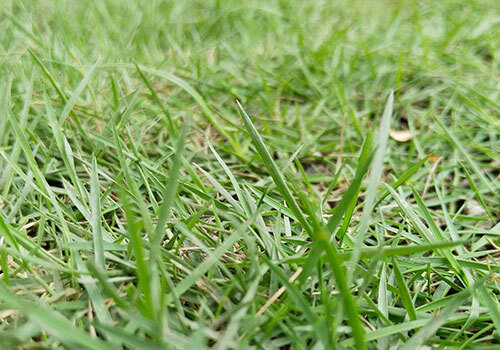
Invasive weeds can be especially troublesome in close-cropped creeping bentgrass. Learn how to keep weeds out in the first place to maintain your bentgrass lawn's well-manicured appeal.
Weed Control in Bentgrass Lawns
Bentgrass lawns are subject to the same weeding issues as most other cool-season turfs. Control of unwanted weeds while maintaining bentgrass health can be more challenging because the popular weed killer active ingredient 2,4-D can harm creeping bentgrass as well in some cases.
Weed Prevention with Pre-Emergent Herbicides: Treating your lawn to keep weeds out in the first place is the easiest way to control them. Apply a pre-emergent herbicide on a split application schedule that includes two treatments in the early and late fall and two in the early and late spring to prevent most weeds from germinating amongst your turf. By parting your pre-emergent treatments out into split applications, you will provide your turf with the greatest amount of protection from new weed growth during these key months. Read the label of the herbicide you select and follow all application instructions carefully.
Note that there could be recommended delays for pre-emergent applications to newly seeded lawns. Some products will list a waiting period after seeding during which the herbicide should not be applied to avoid injuring the grass seedlings. Read the label of your selected herbicide carefully before applying.
Pro Tip
Pre-emergents including the active ingredients prodiamine and pendimethalin are popular choices for weed prevention on creeping bentgrass lawns. Our guide to pre-emergent herbicide treatments can offer additional product recommendations and tips from our pros.
Weed Control with Post-Emergent Herbicides: If weeds are already visible in your bentgrass lawn, use DoMyOwn's Lawn Weed Control How-To Guides to get step-by-step instructions on how to get rid of specific weeds in your turf. These helpful guides will help you identify the weed and provide recommended products to get rid of the weed.
Depending on the weed you are treating, selective post-emergent herbicides can be used to kill the weeds that have appeared among your turf without harming your bentgrass. Selective herbicides are formulated to control weeds without harming your turfgrass. Different types of weeds will require different herbicide active ingredients to gain control of the issue. Check the product label to find a selective weed killer that is labeled for safe use in bentgrass while controlling the weeds that are in your lawn.
A non-selective post-emergent herbicide will damage any plant it is sprayed on, so be sure to only make careful spot treatments if you choose this type of formula. Be aware of the way these products affect other plants.
Disease Control for Bentgrass Lawns
Bentgrass can suffer from many lawn diseases. Proper care to prevent and stop lawn fungus disease are essential to keeping your turf healthy. Dead Spot lawn disease can be a threat, along with Dollar Spot, Brown Patch, and Pythium. In the Northwestern states, bentgrass turf may suffer from Fusarium Patch, Gray Snow Mold (anywhere that prolonged snow cover occurs), Yellow Patch, or Take All Patch (most likely in sandy soil). Red Thread can threaten bentgrass in low fertility environments.
Fungicides can be applied in both preventative and curative ways. Check out our fungicides guide to learn more about how to keep your lawn fungus-free and healthy.
Pro Tip
Finding the right fungicides and herbicides for weed and disease control can be tough. The DoMyOwn Turf Box takes the guesswork out of lawn care by sending the products you need for your turf type and lawn size directly to your door as needed. Learn more about the program and the additional savings subscribers receive.
Bentgrass Pest Control

There are plenty of pests that can pose a threat to your yard, but maintaining an otherwise healthy lawn with good watering, mowing, and fertilization practices can help your turf stay strong and defend itself against these visitors.
Some of the pests commonly found in bentgrass turf include ants, sod webworms, thrips, and white grubs. Insecticides are available for the specific pests you may be facing. Our pros can help you select the right product for use on your turf against the insects you've spotted.
Moles and voles can also damage bentgrass turf. Identify which underground mammal is digging up your bentgrass and see our mole and vole guides for trapping suggestions.
For more details on how to control a specific pest, check out our lawn care guides for more tips and product recommendations.
If you have any questions about the products or methods mentioned in this guide, contact our lawn care experts.
Or, explore all of our turf and lawn care products and equipment.





